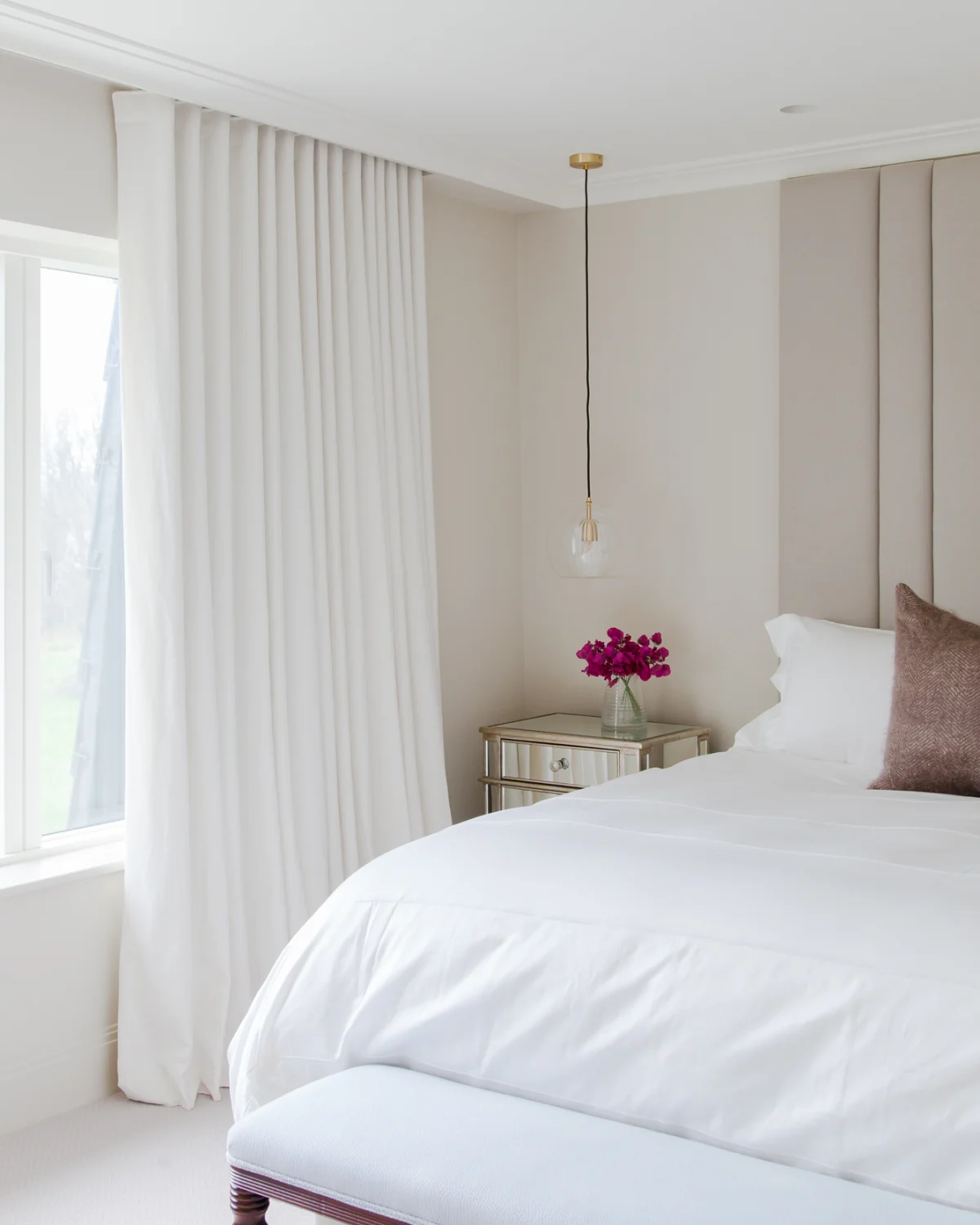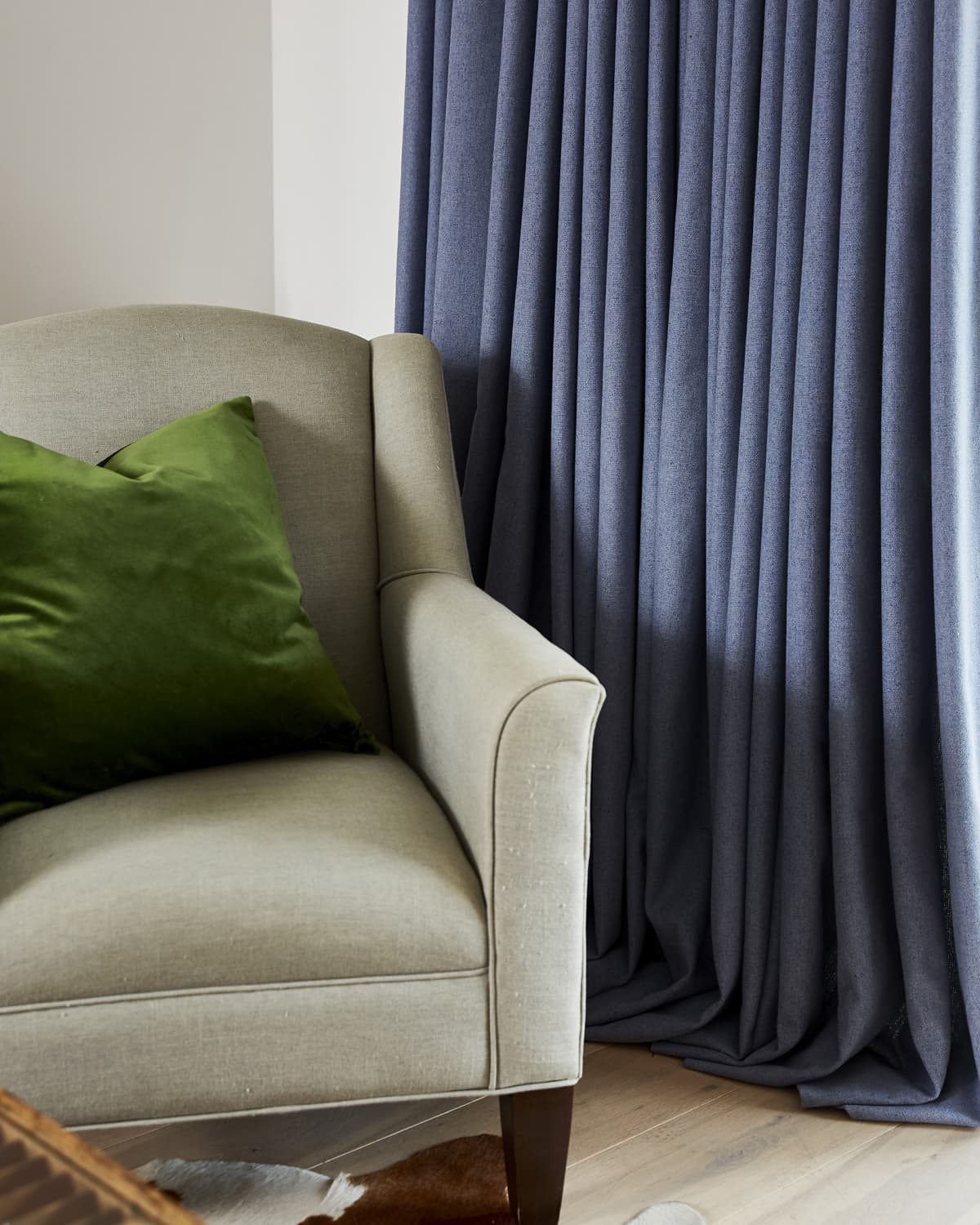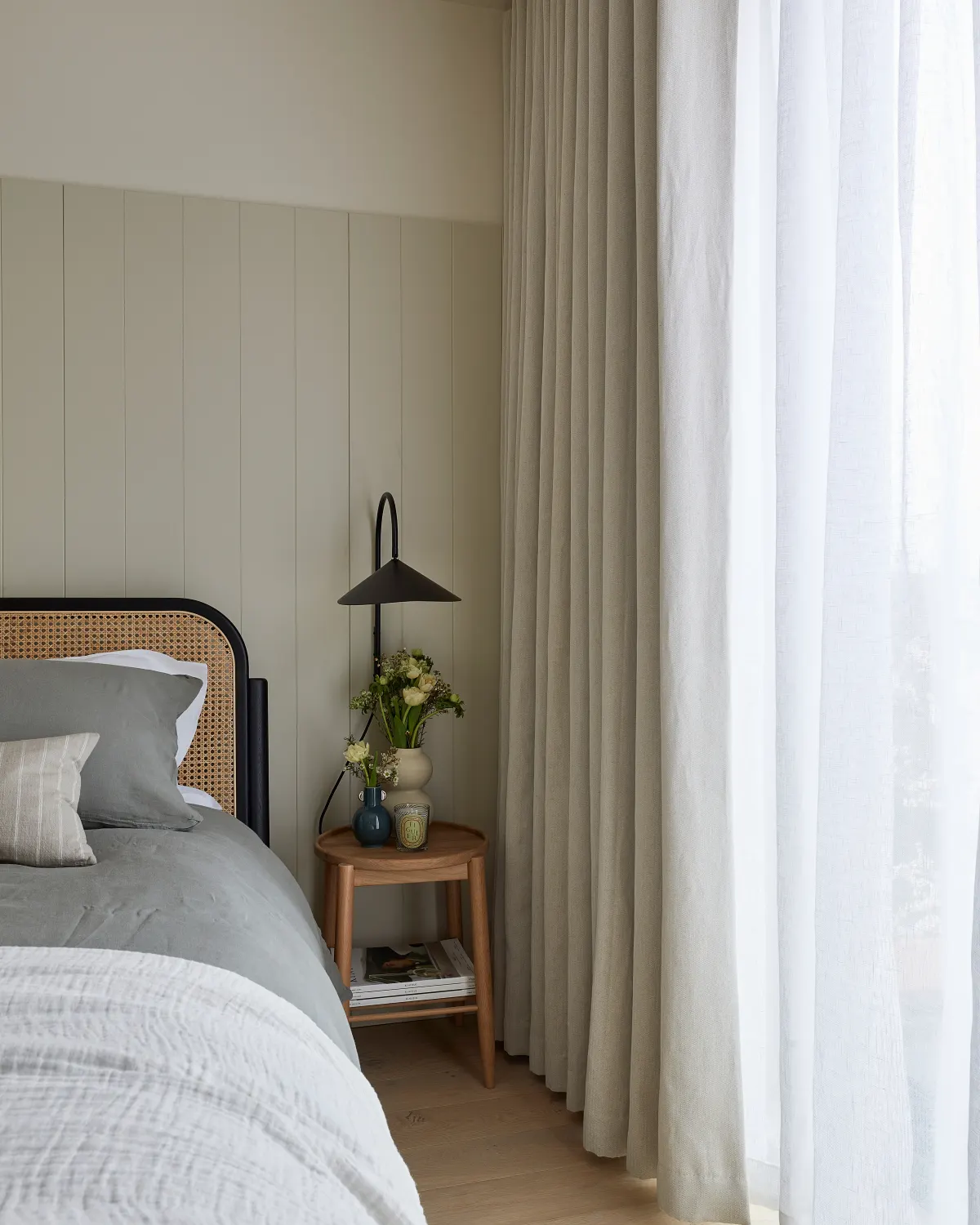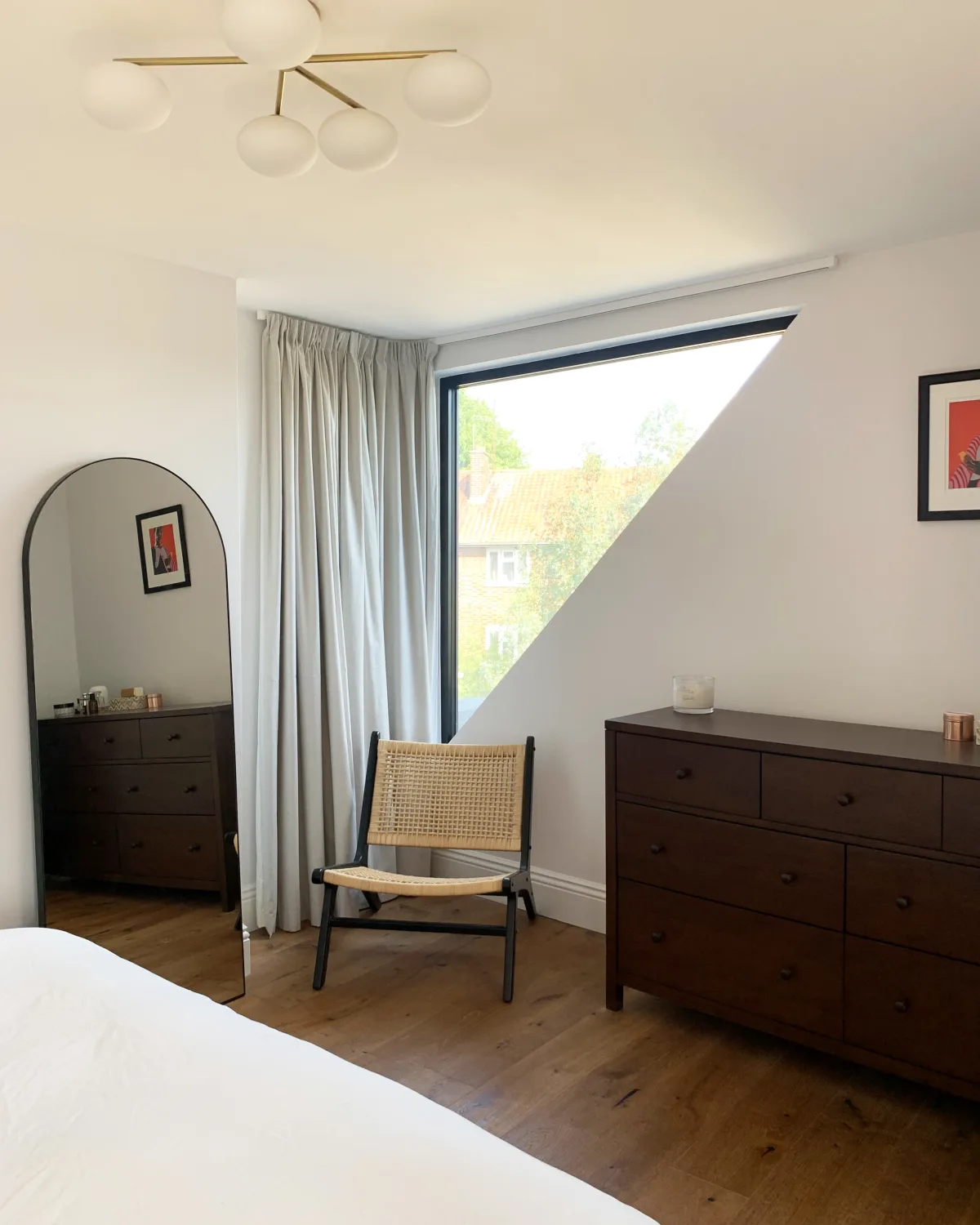Book our home measuring service in London
How to Choose Your Curtains
Let’s get started with choosing the right curtains for your home. What is the best quality fabric for curtains? Should I get blackout curtains? How much do made to measure curtains cost? There can be many questions when searching for window apparel for your home and curtains are often overlooked, but are a practical and stylish finishing touch to any room. We’ve made it easy with a step-by-step guide to choosing curtains for your home. First things first, size. Follow our simple measuring instructions here to measure up your windows in a couple of minutes.
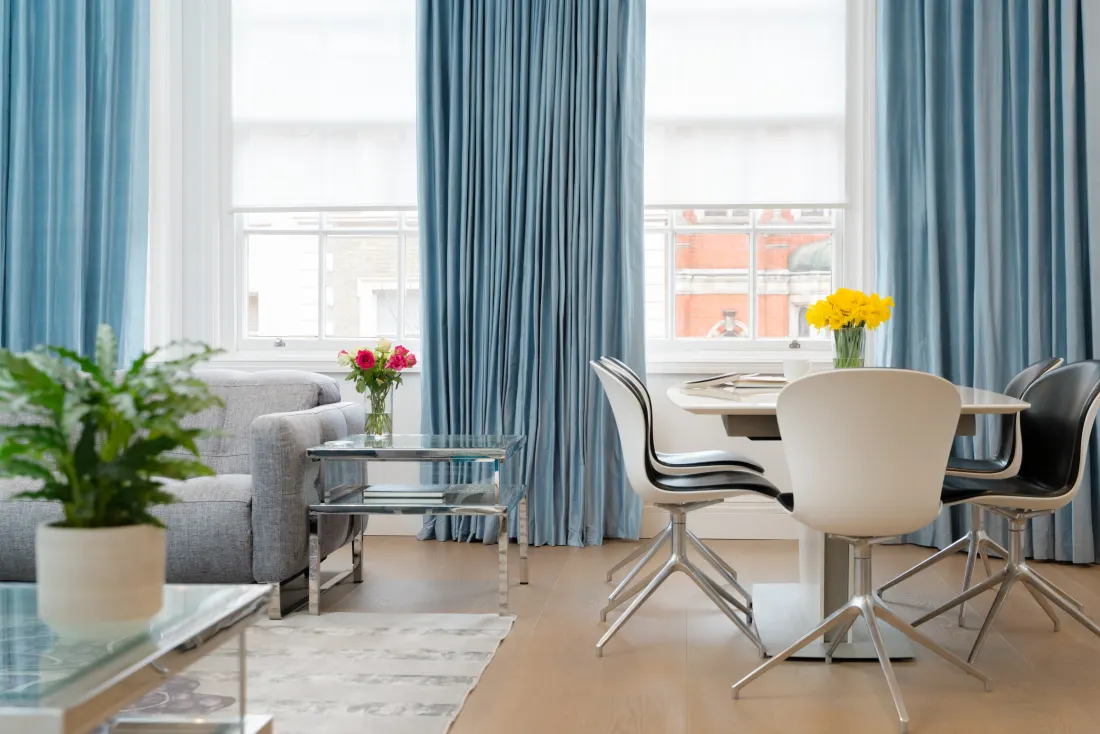
Step 1: Choose your heading
Curtain headings are an important decision in the design process and should not be made lightly. The heading you decide will determine the style of the curtains and will control the fullness for a more classic, modern or relaxed look.
Did you know? You can select from a simple, stylish range of curtain poles and tracks to go with your heading choice. See our range here.
Step 2: Choose your length
The height of your curtains can create an opulent or more modern look, depending on how much ‘pooling’ you decide. Pooling is the amount of fabric that gathers on the floor at the foot of your window. Our standardised pooling allowance is an additional 5cm added to the height of your curtains, which is great for hiding uneven floors and creating warmth and character in a room.
Did you know? Having pooling can help stop heat from escaping through your windows!
Step 3: Choose your fabric
When choosing fabrics for different rooms, it’s important to consider the aesthetic and function of each space.
Did you know? We have over 300 fabrics to choose from so this is just a selection of our favourites. See all we have to offer here.
Step 4: Choose your lining
Adding lining to your curtains can add warmth or block light in your home for a great night’s sleep.
Did you know? Up to 25% of household heat is lost through windows, by adding lining you can better insulate your home to help save on energy bills.
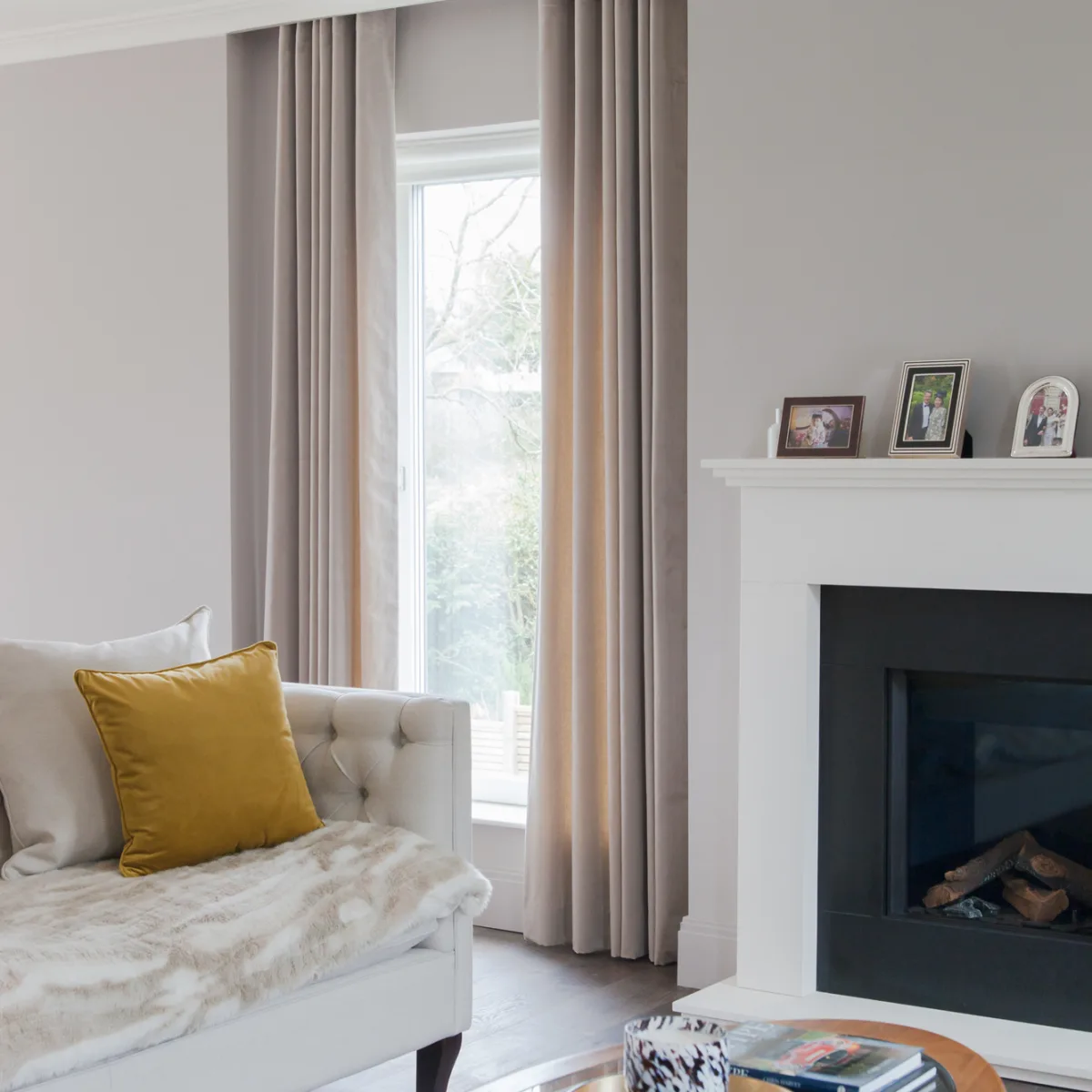
Unlined
Our heavier fabrics may not need lining if you want to allow a small amount of light through.

Blackout
Blackout lining is perfect for bedroom curtains. No light can get through allowing for a great night’s sleep.

Thermal
Thermal lined curtains are perfect for the colder months as they reduce the amount of heat that escapes through your window.
Step 5: Fitting your curtains
For curtains, most of our customers opt for a curtain track which can be fixed to the wall (known as face fixing) or the ceiling (known as top fixing). Lined, and particularly interlined curtains, can be surprisingly heavy so a heavy-duty, good-quality, metal track should be used. The are many options now available, including some attractive, contemporary options that are designed to be on show. However, more standard tracks can be painted to match the wall (or ceiling) as long as the gliders can run freely.
The great thing about curtain tracks is that they can bend, by as much as 90 degrees, with some able to bend in two directions to create an ‘S’ bend. This makes them perfect for bay or bow windows where the track can follow the curves of the window.
Curtain poles are usually straight but styles that bend to follow a bay window are also available. Poles come in a variety of thicknesses and a huge range of finishes - wrought iron, wood, perspex, and covered in leather to name a few. As such, they can make a dramatic statement in their own right, especially when combined with decorative finials. Curtain poles are usually fitted directly to the wall above the window but may need extension blocks or brackets if curtains are layered, or a combination of curtains and blinds are being used.
If you’re contemplating short curtains, then the track or pole should be installed to the height that allows your curtains to end where you’d planned. With floor-length curtains, the track or pole should be positioned at least 10cm above the window top to provide effective blackout and ensure heading tapes aren’t visible from outside.
Finally, make sure your track or pole is long enough to extend past either side of the window, enabling the curtains to be pulled back and allowing as much light as possible into the room during the day.

Do curtains have seams or joins?
The possible width of a fabric comes from the width of the roll. If your windows are wider than the fabric width then it is necessary to have a vertical join to cover the entire window. The way curtains have pleats and hang means seams are usually less noticeable and hidden in folds of the fabric. In most cases, curtains are a better option for wider windows.
Why choose Stitched?
Buying made-to-measure from Stitched means you can choose every aspect and design your curtains to your liking. You can find out more about Stitched here.
If you need some help, get in touch with our friendly team. We can get your questions answered in 20 minutes! Book a call.
How long do made to measure curtains take?
Our made-to-measure curtains are hand stitched to your bespoke requirements, every detail finished by hand in local workshops up and down the country. Behind the scenes, our team works hard on design details, from fabrics, and headings, to more bespoke requests. Our lead times are specific for each project, to make sure our sewistas have time to cut, pin and sew to the highest quality and finish. The number of windows in a project can also impact lead times, it takes time to hand-stitch quality window apparel. If you have any questions on projects or lead times, get in touch with our team hello@stitched.co.uk.





